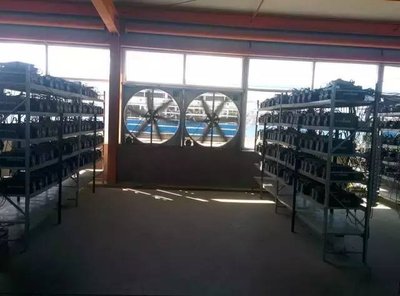As we venture further into the realm of cryptocurrencies, the rising popularity of mining—particularly Bitcoin (BTC), Ethereum (ETH), and Dogecoin (DOG)—has ignited a fervent discussion about energy consumption. The demands of powering mining rigs often lead to skyrocketing electricity bills, creating a pressing need for innovative solutions. Enter renewable energy, an environmental ally poised to reshape the way we power our mining farms by 2025.

The traditional mining landscape has long been critiqued for its environmental impact, with massive energy consumption often linked to fossil fuels. However, there’s a significant shift on the horizon. Renewable energy sources, such as solar, wind, and hydroelectric power, are increasingly being recognized for their potential to drastically cut costs. By integrating these green solutions into mining machine hosting, companies can not only reduce expenses but also contribute to a more sustainable ecosystem.
Moreover, the current trajectory of energy consumption in the mining industry demands urgent attention. Bitcoin mining alone accounted for around 0.5% of the world’s electricity usage in previous years. This staggering figure underscores why stakeholders are exploring alternative energy sources. Forward-thinking mining farms are beginning to embrace renewable energy models; for instance, implementing solar arrays or utilizing energy generated from wind farms to power their rigs.

As we gear up for 2025, significant advancements in technology could enhance the viability of renewable energy. Improved energy storage solutions, like batteries with higher capacity and efficiency, could store excess power generated during peak production times for use during lower output periods. This would allow mining operations to remain functional without being contingent on the variances of energy generation—thus fostering a more reliable mining environment.
In addition to reducing costs, the integration of renewable energy can provide mining facilities with a competitive edge. Traditional mining operations face mounting pressure from both regulatory bodies and the public to mitigate their carbon footprints. By adopting green energy, companies not only satisfy regulatory concerns but also bolster their brand image, appealing to an ever-conscious consumer base. The landscape will evolve; miners who incorporate renewable solutions will likely thrive.”
Now, consider the potential synergy of cryptocurrencies themselves. New frameworks and platforms emerging from the blockchain sphere are dedicated to sustainability. For example, Ethereum’s transition to a proof-of-stake (PoS) consensus algorithm addresses energy consumption head-on. “Eco-friendly” cryptocurrencies are beginning to garner attention, creating markets that align positively with renewable energy initiatives.

All of these developments culminate in a scenario where miners can not only reduce their overhead costs but also engage in practices that promote sustainability. Hosting providers will need to adapt their business models accordingly, presenting clients with renewable options and incentives for utilizing such energy. Miners could potentially partner with renewable energy providers, establishing mutually beneficial arrangements that enable hosting facilities to offer more competitive and greener services.
As we look to the future, the role of regulatory frameworks and government incentives cannot be underestimated. Countries like Iceland and Norway, which boast abundant renewable resources, have seen a surge in their mining industry, thanks in part to their favorable policies promoting sustainable energy. Though incentives for renewable energy in cryptocurrency mining are still in their infancy, their potential to drive industry growth is enormous.
In conclusion, the convergence of renewable energy and cryptocurrency mining signifies a transformative journey towards sustainability by 2025. With rising energy costs becoming increasingly prohibitive, investing in renewable energy sources not only paves the way for cost-efficient mining hosting but also addresses the wider concerns of environmental impact. As a company dedicated to revolutionizing the mining landscape, embracing these innovative solutions could set the stage for a cleaner, more efficient future. After all, in the world of mining, the desire for profitability must harmonize with the equally important imperative of sustainability.”
The article offers a compelling analysis of how renewable energy sources, such as solar and wind, are set to transform the mining industry by 2025. It highlights innovative strategies that companies can adopt to lower power costs, enhance sustainability, and mitigate environmental impacts, positioning them as industry leaders in a rapidly evolving market.